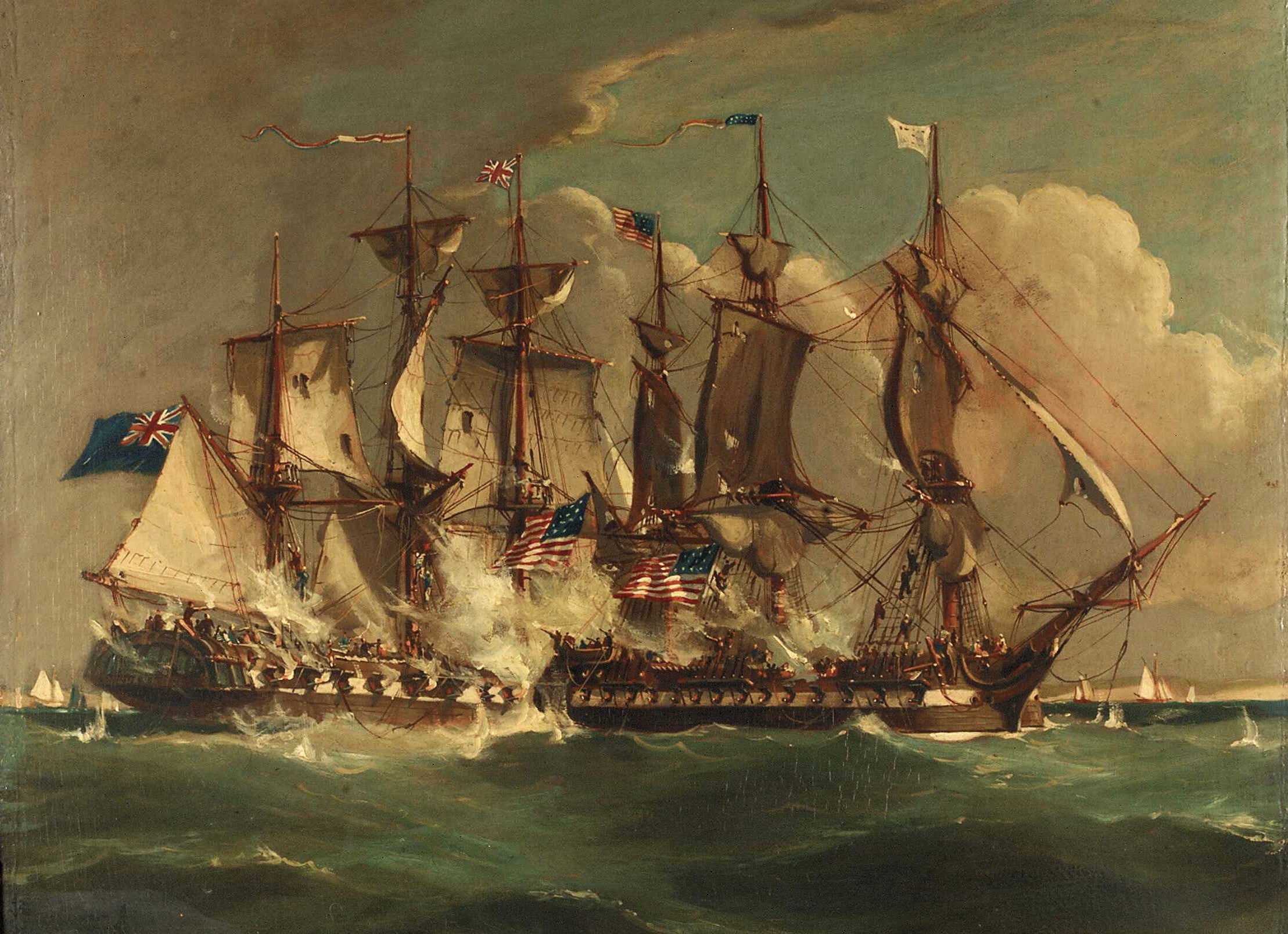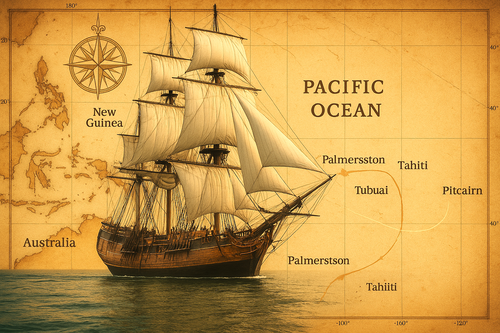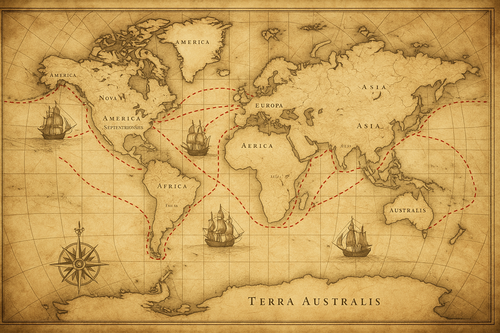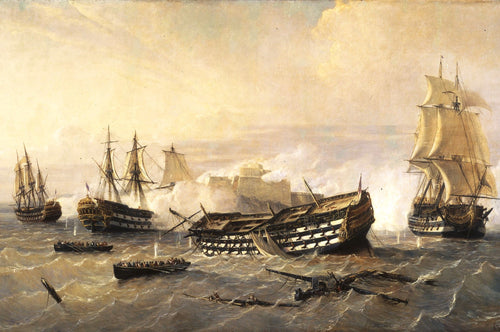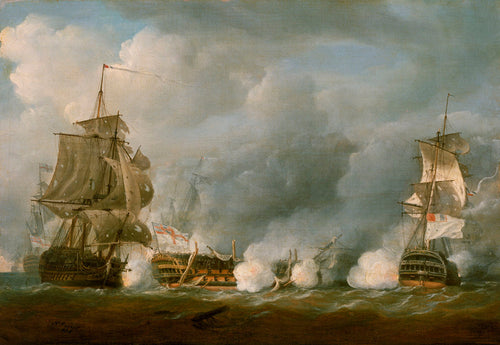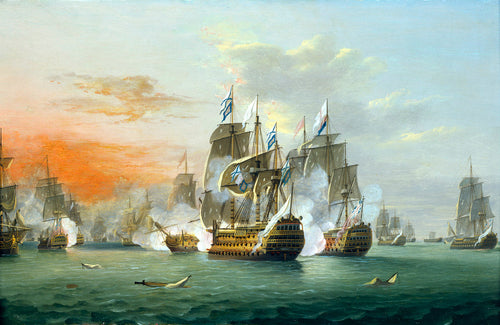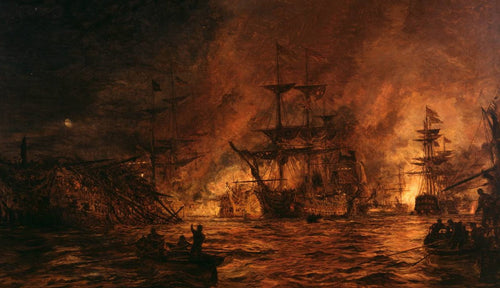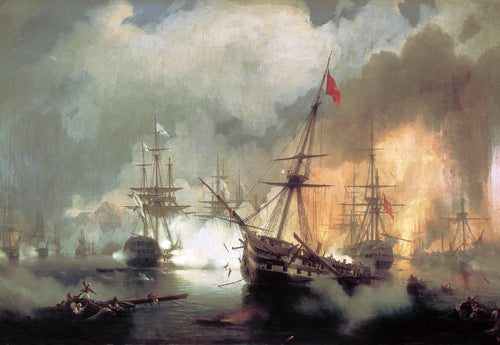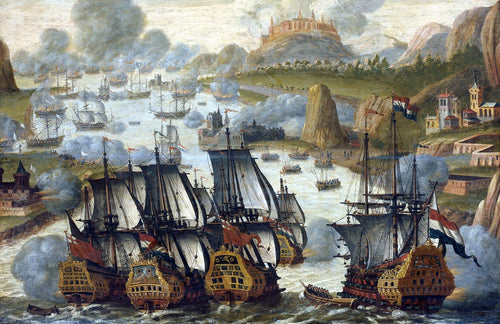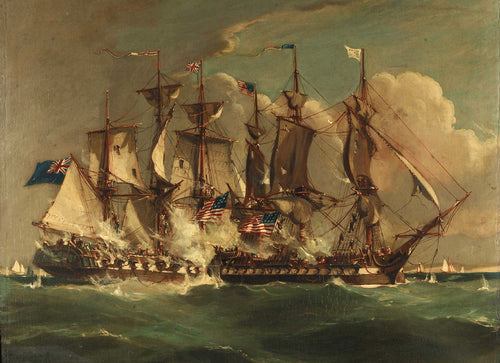The early 19th century was marked by the War of 1812, a significant conflict between the United States and Great Britain. Among the many encounters that took place, the naval battle between the British frigate HMS Shannon and the American frigate USS Chesapeake stands out. This thrilling battle serves as an enduring example of naval tactics, courage, and the unpredictable nature of war.
Background:
The War of 1812 was a product of unresolved tensions between the United States and Great Britain. While both nations were independent, their relationship was marred by trade restrictions, impressment of American sailors, and territorial disputes. As a result, the United States declared war on Britain on June 18, 1812.
 (HMS Shannon boards USS Chesapeake on the afternoon of 1 June 1813 off Boston. Painted in 1815 by Thomas Buttersworth (1768–1842)
(HMS Shannon boards USS Chesapeake on the afternoon of 1 June 1813 off Boston. Painted in 1815 by Thomas Buttersworth (1768–1842)
The Frigates:
HMS Shannon:
Commissioned in 1806, the HMS Shannon was a 38-gun Leda-class frigate of the British Royal Navy. Under the command of Captain Philip Broke, the Shannon had a well-trained and disciplined crew. Broke was a firm believer in naval gunnery and ensured his crew was proficient in gunnery drills.
USS Chesapeake:
Launched in 1799, the USS Chesapeake was a 36-gun frigate of the United States Navy. By the time of her fateful encounter with the Shannon, the Chesapeake had a new captain, James Lawrence. Though an experienced officer, Lawrence had little time to train his crew before setting sail.
The Battle:
On June 1, 1813, the two frigates met off the coast of Boston. The Chesapeake, under the command of Captain Lawrence, sailed out to confront the British frigate. Both ships maneuvered in the rough seas, seeking an advantageous position.

(Painting by Christoffer Wilhelm Eckersberg (1783–1853)
The first broadside from the Shannon was devastating, causing significant damage to the Chesapeake and killing or wounding many of her crew. In the chaos, the Chesapeake's wheel was destroyed, leaving her unable to maneuver effectively. Captain Broke seized the opportunity and ordered the Shannon to close in on the disabled American frigate.
As the two ships collided, grappling hooks were thrown, and British sailors boarded the Chesapeake. Fierce hand-to-hand combat ensued, and within minutes, the British had gained control of the American ship. Captain Lawrence, mortally wounded, famously ordered, "Don't give up the ship," but his crew was unable to turn the tide.
Aftermath and Legacy:
The capture of the USS Chesapeake was a significant victory for the British during the War of 1812. It demonstrated the effectiveness of disciplined training and superior tactics in naval warfare. The battle also had a profound impact on the morale of both nations. For the United States, the loss of the Chesapeake was a sobering reminder of the challenges of facing a well-trained and experienced adversary. Conversely, the victory provided a much-needed boost to the British Royal Navy's reputation.
In the annals of naval history, the battle between the HMS Shannon and the USS Chesapeake remains an important and captivating story. The clash of these two formidable frigates serves as a testament to the bravery, skill, and determination of sailors in the face of adversity.
